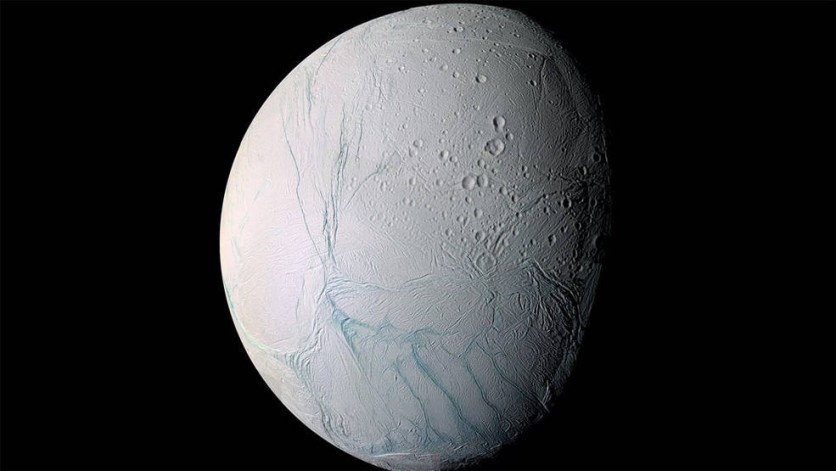NASA's Cassini mission has made a significant discovery on one of Saturn's moons, revealing organic compounds necessary for life.
Using data collected from the mission, an international group of scientists has discovered phosphorus, an essential chemical element for biological processes, inside icy grains expelled into space from Enceladus, a small moon with a subsurface ocean.
Enceladus is known for its geysers that erupt from cracks in its icy crust, releasing water from its subsurface ocean. These geysers contribute to Saturn's E ring, which consists of icy particles. In its mission from 2004 to 2017, Cassini flew through the plume and E ring multiple times, collecting valuable data.

NASA Cassini Discovers Building Blocks for Life
Scientists analyzing the data found that Enceladus' ice grains contain a diverse range of minerals and organic compounds, including the building blocks for amino acids, which are linked with life as we know it.
Notably, phosphorus, one of the least abundant essential elements for life, had not been detected until now. Phosphorus is a vital component of DNA, cell membranes, and energy-carrying molecules in living organisms.
The detection of phosphorus in the plume of Enceladus reinforces the moon's potential habitability, adding to the existing knowledge obtained from analyzing its ice grains, which unveiled the presence of sodium, potassium, chlorine, and carbonate-containing compounds.
Furthermore, computer models have indicated that Enceladus' subsurface ocean exhibits ideal conditions that could support life. For this study, scientists accessed the necessary data through NASA's Planetary Data System, an extensive archive of digital data from various planetary missions.
By closely examining the Cosmic Dust Analyzer instrument aboard Cassini, which gathered samples of icy particles from Enceladus within Saturn's E ring, researchers made a remarkable discovery: they identified significant concentrations of sodium phosphates within certain grains.
These findings were subsequently verified through laboratory experiments conducted in Europe and Japan, confirming the presence of phosphorus in Enceladus' ocean.
Significant Amount of Phosphate
The team's geochemical modeling further illustrated that there could be a significant amount of phosphate, the water-soluble form of phosphorus, in other icy ocean worlds located in the outer regions of the solar system.
This discovery carries important implications for the potential habitability of these worlds, particularly those that formed from ancient ice containing carbon dioxide.
While the detection of phosphorus in Enceladus' ocean is undoubtedly captivating, scientists are careful to highlight that it does not serve as definitive evidence for the existence of life on the moon or any other celestial body within our solar system.
Although having the essential ingredients is a necessary condition, this alone is insufficient to sustain extraterrestrial life. The question of whether Enceladus' ocean could have served as a possible origin for life remains unanswered.
The Cassini mission may have concluded in 2017, but the wealth of data it collected continues to be a valuable resource. The mission, intended initially to explore Saturn and its moons, has made profound discoveries that extend beyond planetary science.
The detection of phosphorus in Enceladus' subsurface ocean sets the stage for assessing the habitability potential of other icy ocean worlds in our solar system, fueling the quest for finding life beyond Earth.
Related Article : NASA's Webb Spots Massive Plume from Saturn Moon Spanning Nearly the Distance from LA to Buenos Aires





